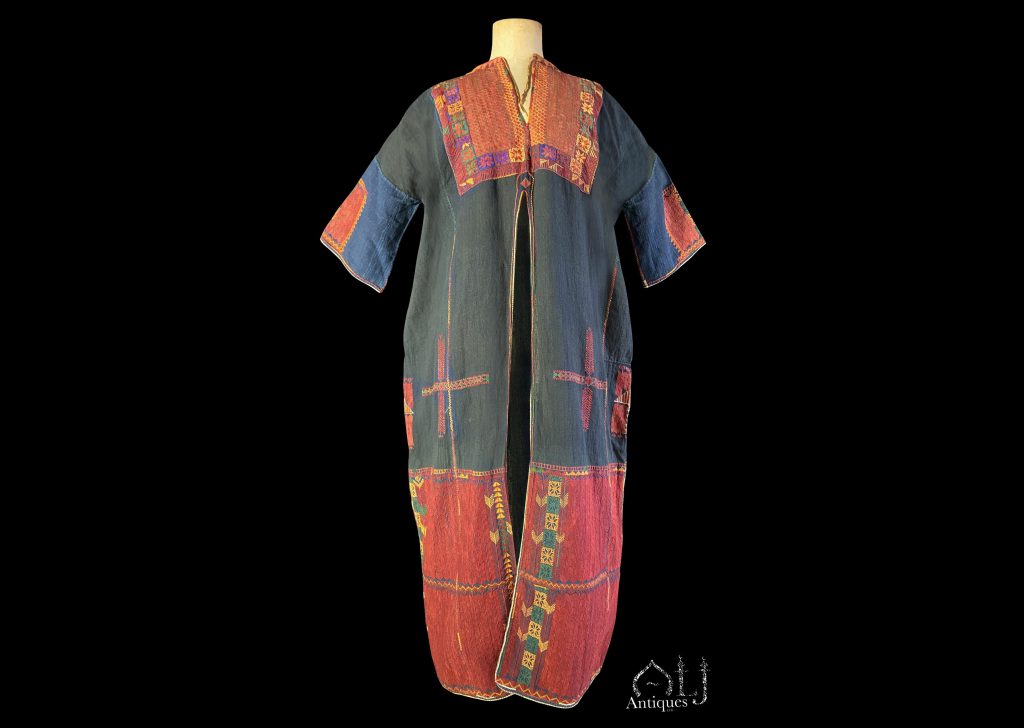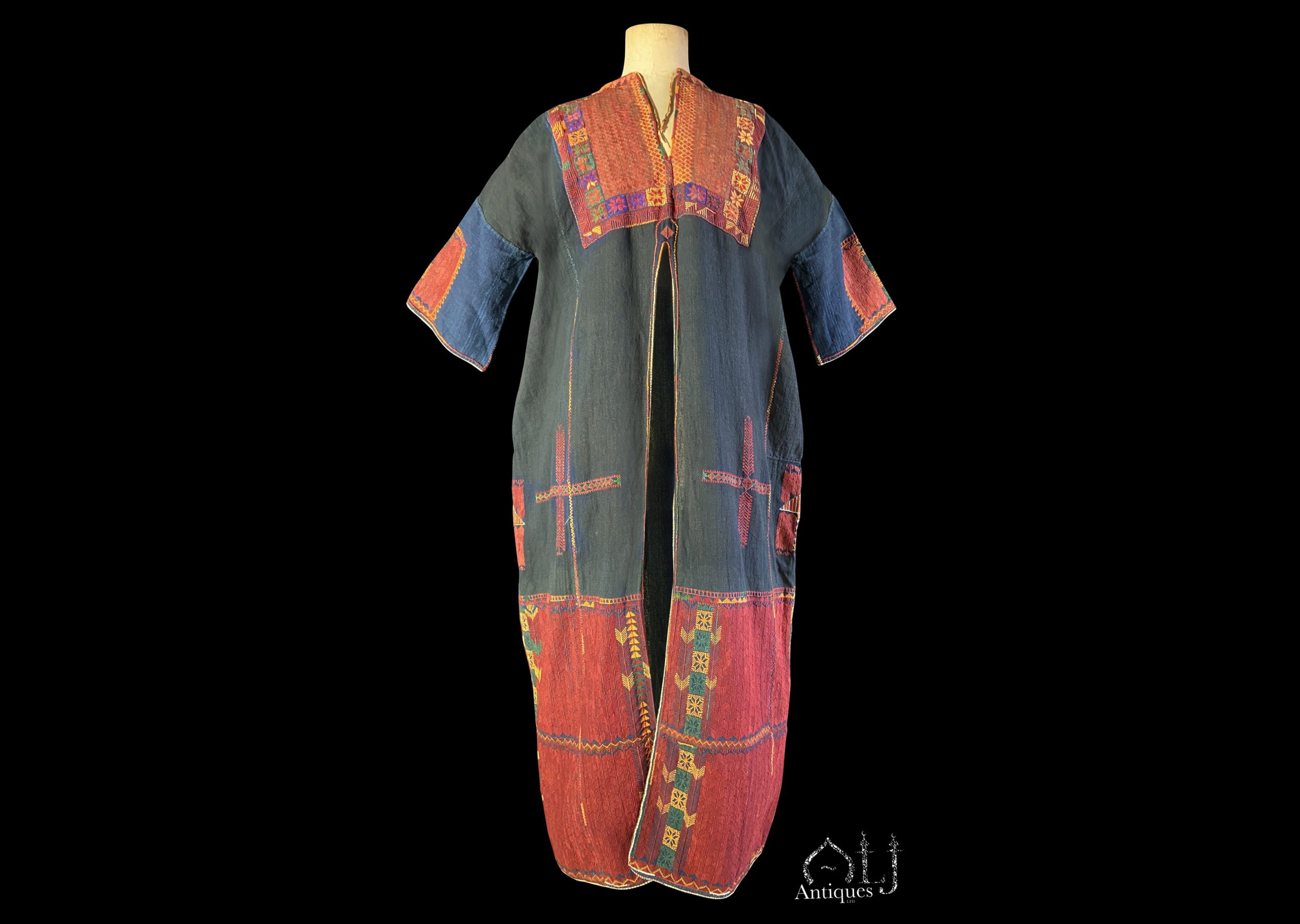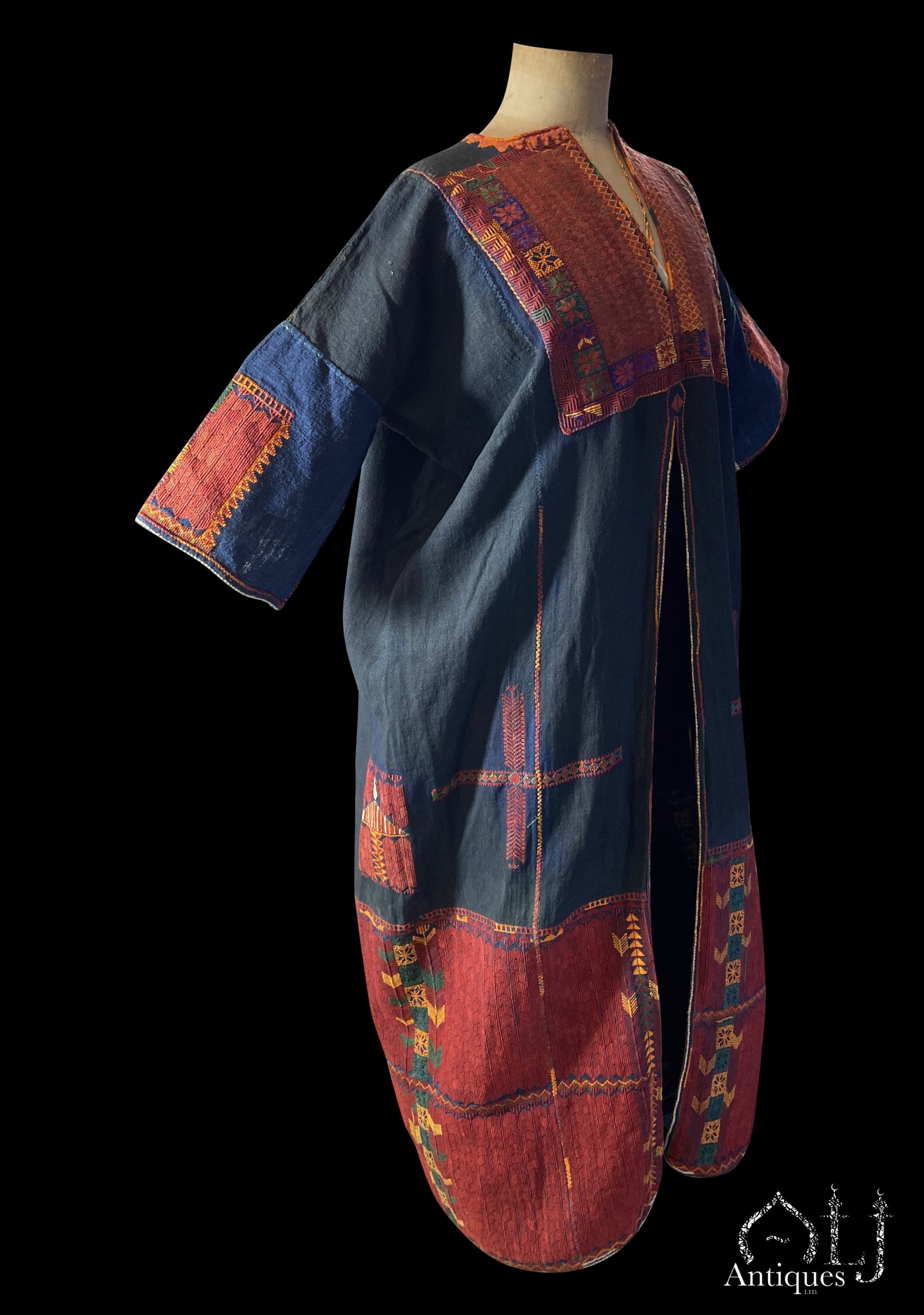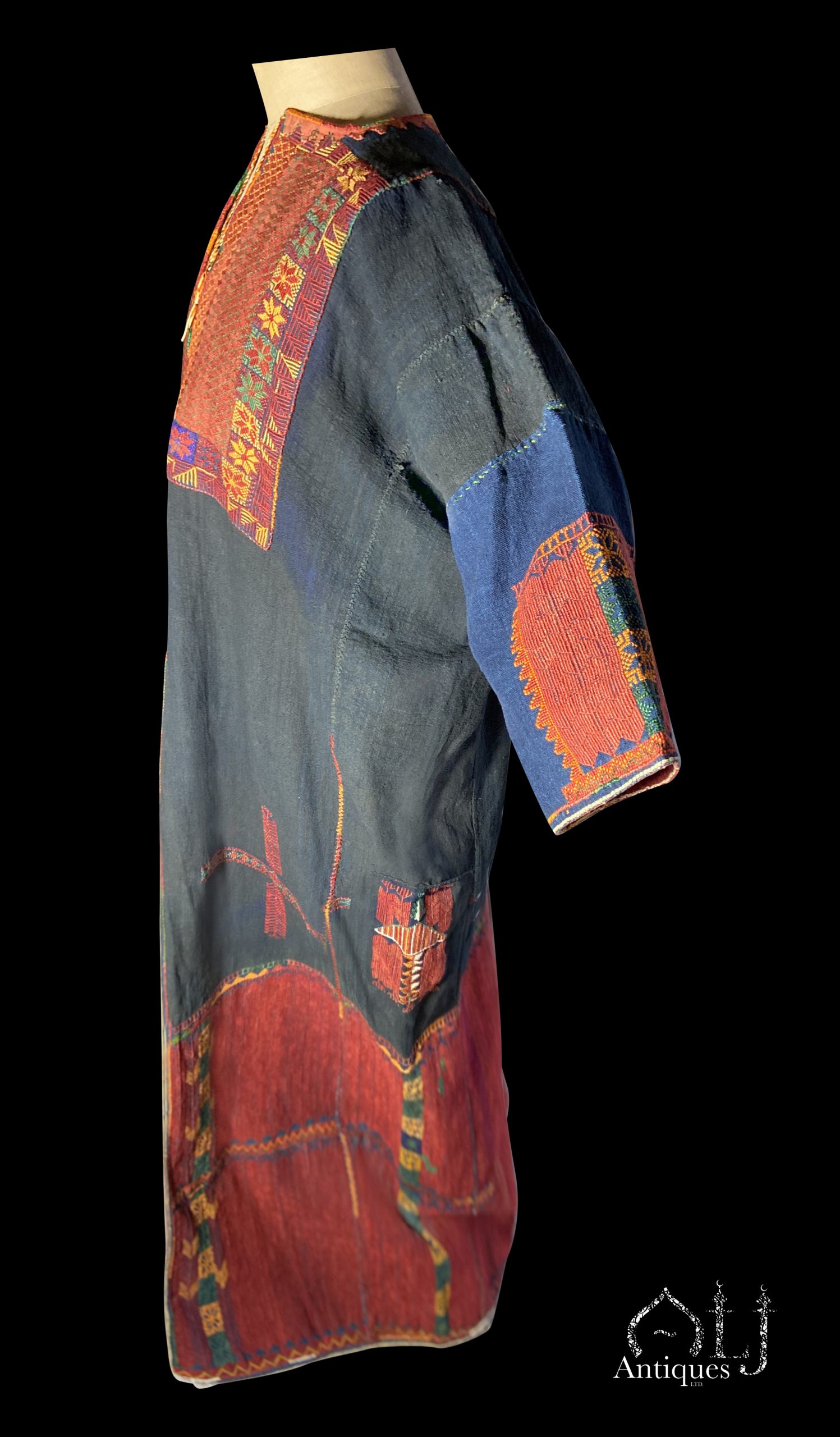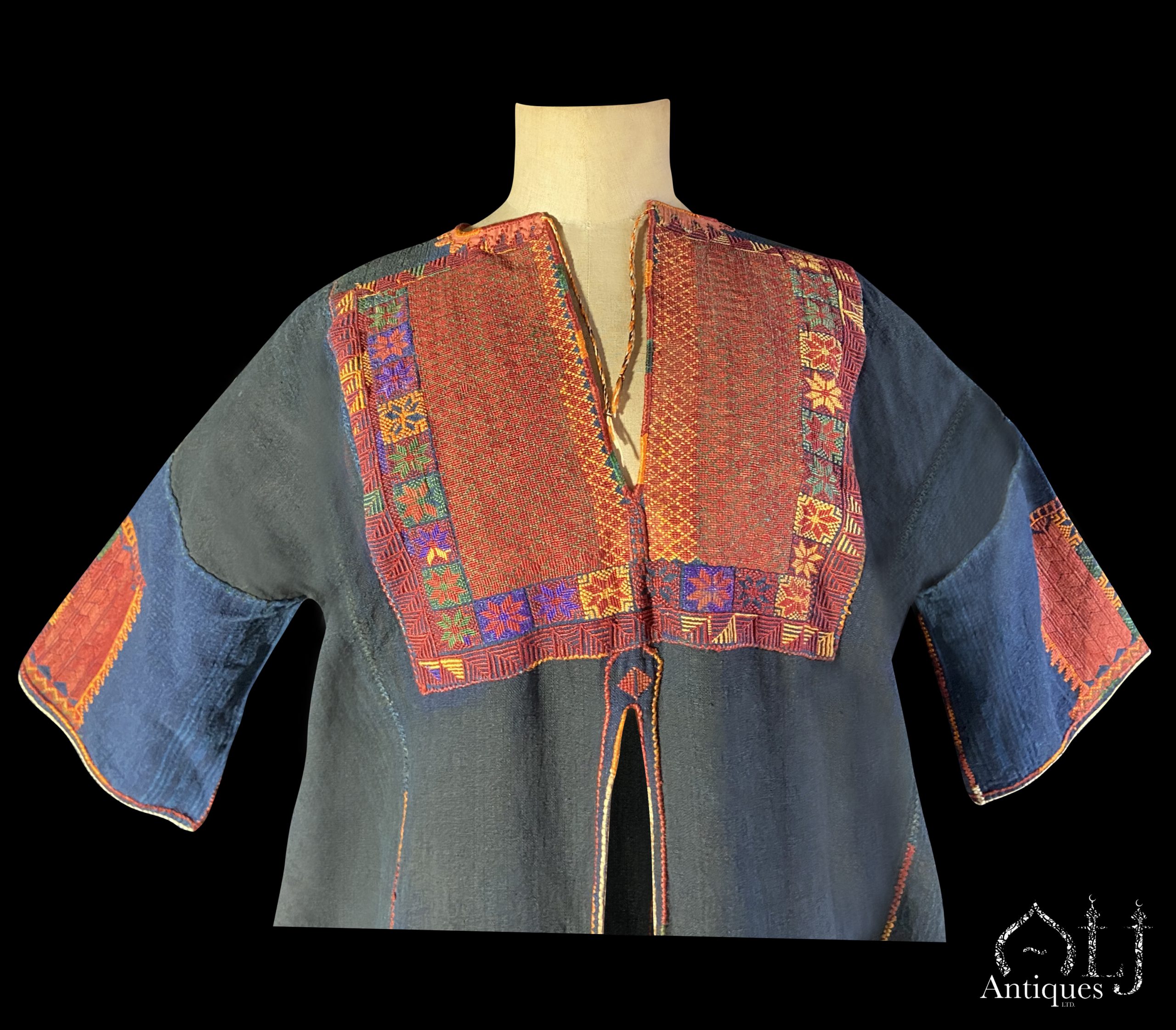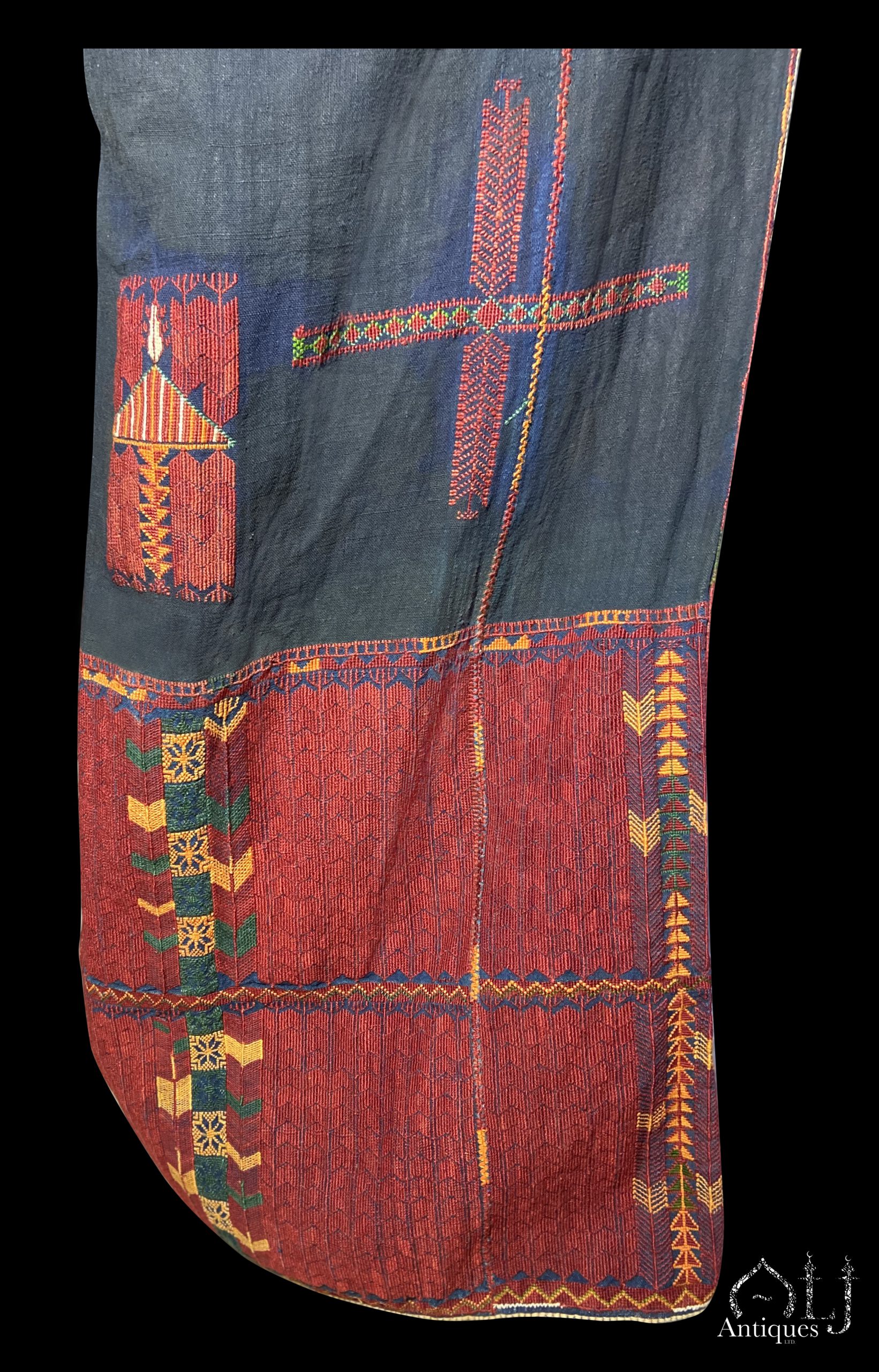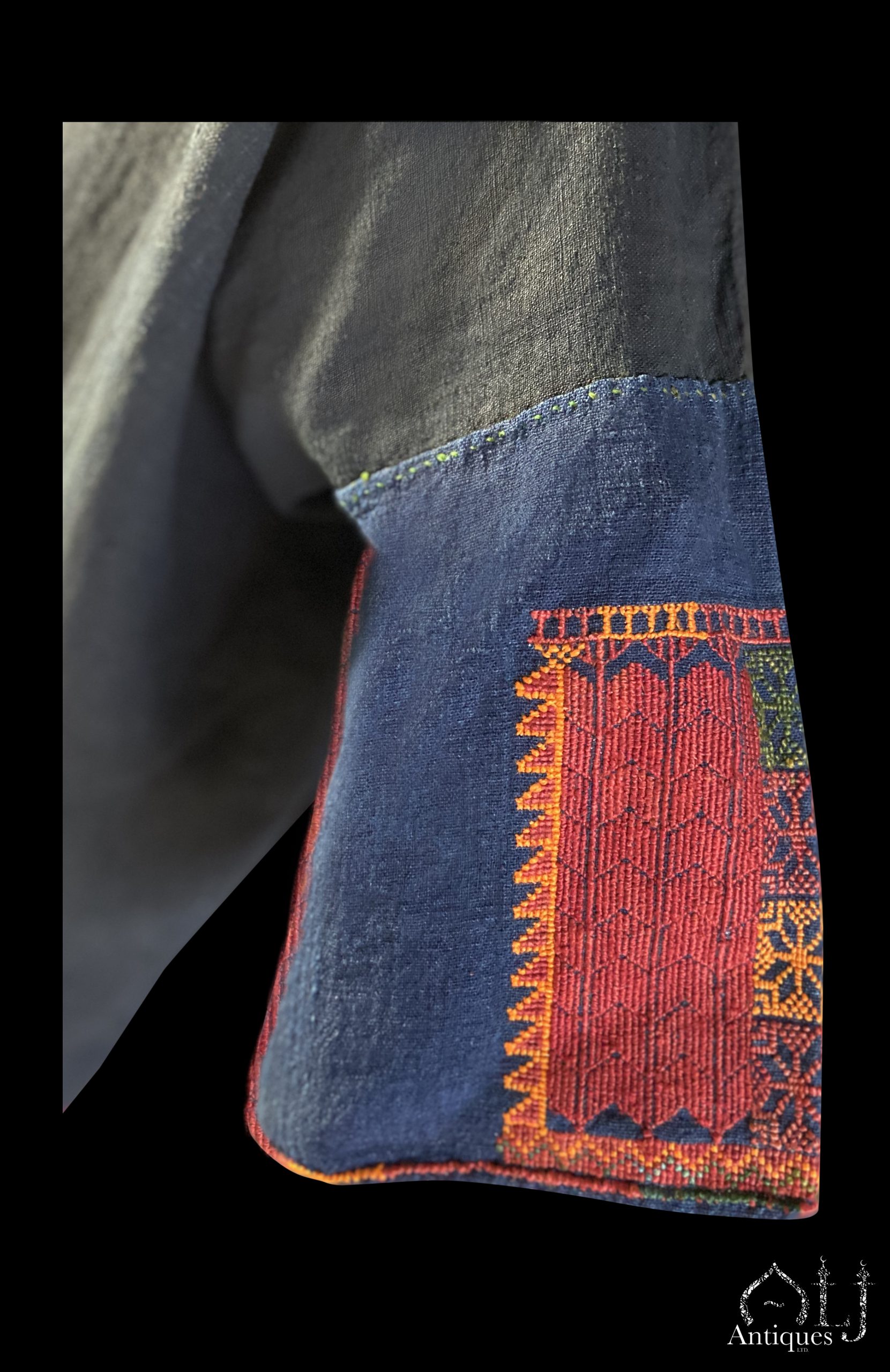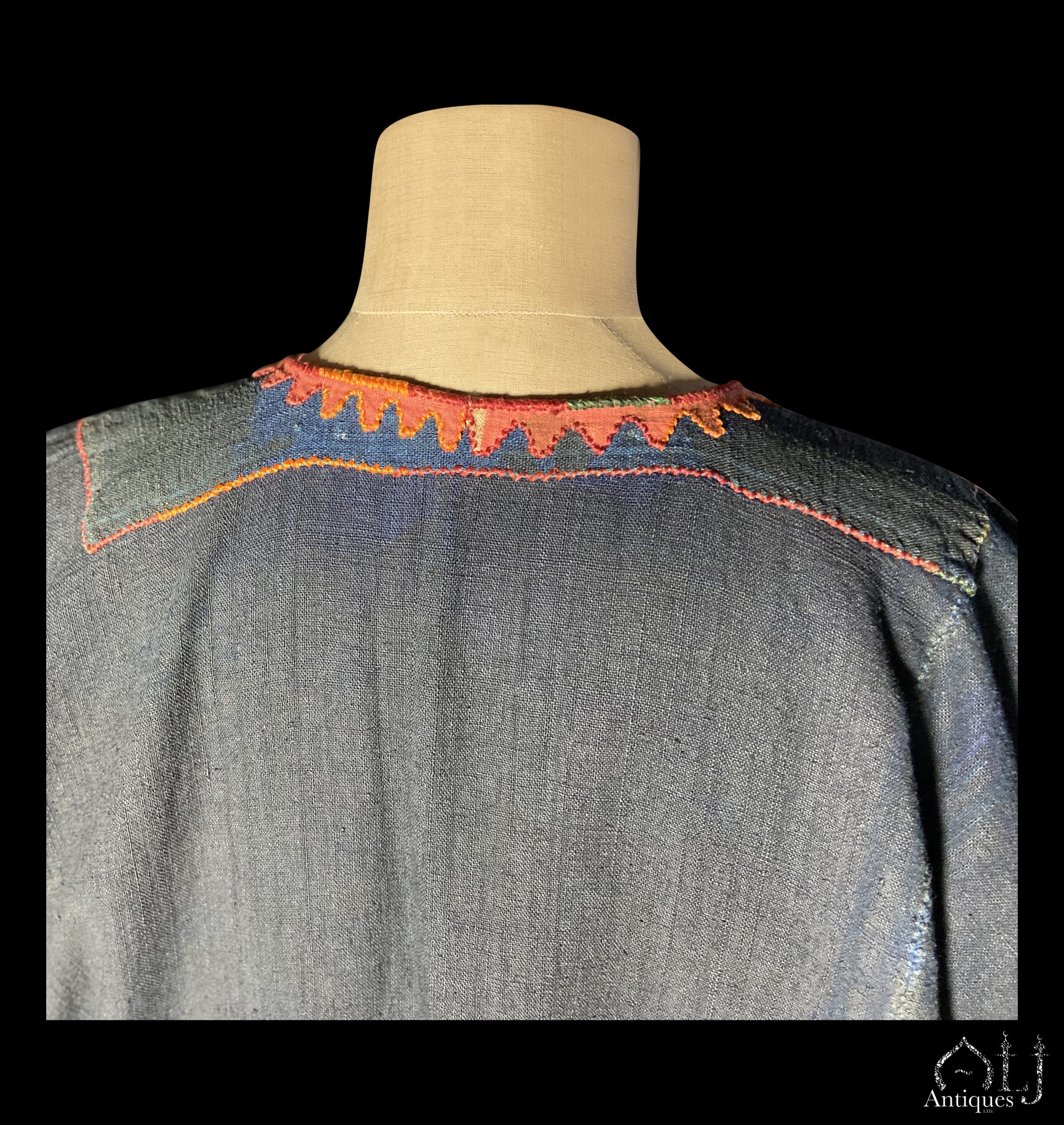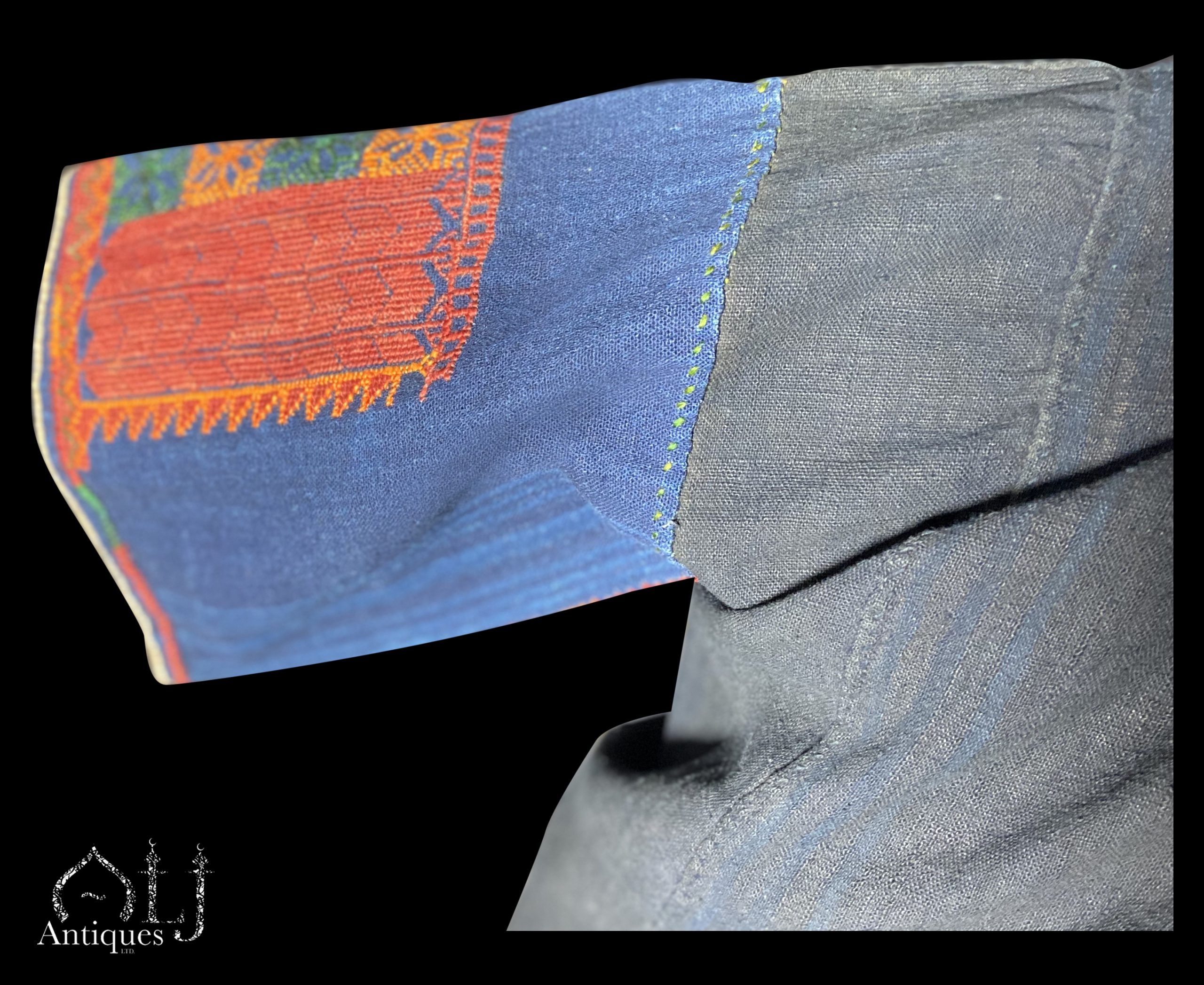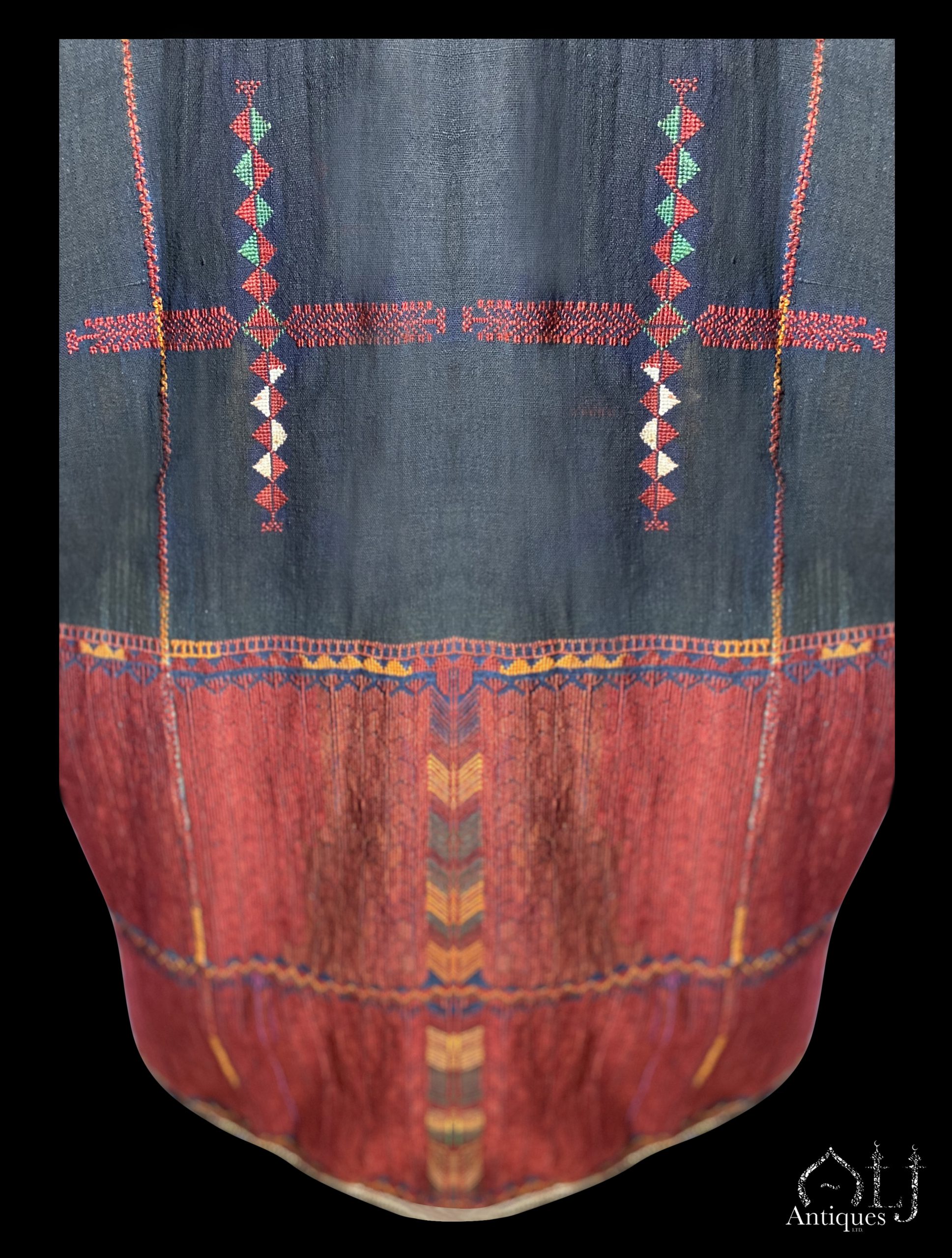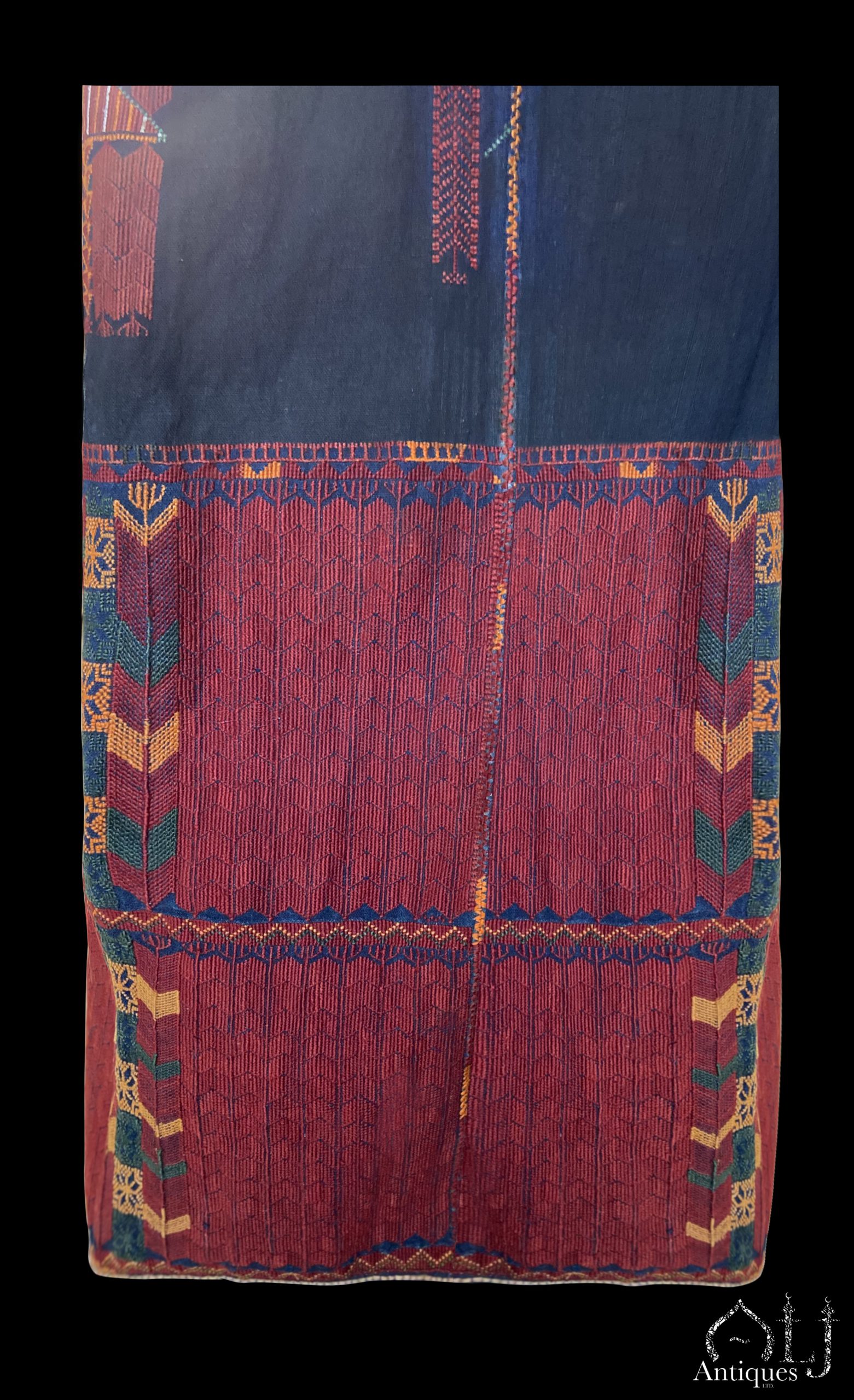Description
This type of half sleeved dresses with an open skirt was predominantly made in the city of Ramallah and the Ashdod region during the nineteenth century up to the beginning of the twentieth century.
Usually this type of dress was embroidered by virgin maiden girls and was prepared to be worn during the ceremonies of their wedding day and was considered as an important garment to be worn in the procession of the bride celebrations, and in order to keep the bride decency whilst wearing this type of open-skirt dresses, the ladies used to make and ware long protective or covering pants or so called (sirwal or elbas).
The scarcity of this type of traditional dress is distinguished not only by its beauty and accuracy, for the idea in designing this dress was probably to combine two types of ladies costumes in one by merging the normal dress with the long coat which is usually open from its front side, but also through its story as it was politically and socially controversial by some of the influential governing Ottoman bodies who had some religious and militant tendency.
Some of those who were controlling the region at the time were those who opposed it as they considered that this type of dress is shameful through the large opining in the middle of the front part of the skirt of the dress and also through the fact that it was designed with short sleeves, the opposing view was that this type of dress had some sexual connotations, overtones and was considered to be sexually arousing that did not fit with the conservative customs and traditions prevailing in the region.
As those opponents were defaming and resisting everyone who made and wore those dresses until the villagers were finally convinced and felt ashamed of its symbolism and no longer accepted this type of much body revealing dresses and were actually persuaded not to continue producing this type of dress until it was practically extinct and out of fashion among young women after the end of the first world war.
From here comes the importance of this dress as it is old and meticulous in its making through the fine materials used with its exceptionally fine embroidery, its history and is very hard to find.
There are some few similar examples that have survived and can be found in some international museums but unfortunately the large part of them is damaged, so here we have been lucky to obtain two models (lots 507 & 508) of this type of clothing and in such excellent condition as if they were made yesterday.
The embroidery on this dress is particularly fine and the colour scheme used is unusual for it’s being used on predominantly deep indigo blue grounds.
And in order to be able to create the deep indigo cotton grounds, this was a very expensive and time-consuming process for the fabric needed to be repeatedly dyed with indigo over and over again.
The main fabric of the dress is made with hand woven linen of indigo-blue with embroidery in cross-stitch, also the extra attention used in embroidering this dress as if its been embroidered with double-sided cross-stiches inside out in orangey-red silk, with other details in yellow, white, blue, pink and mauve.
The main and predominant pattern used in the decoration of this dress is the tall palm patterns, the eight-pointed star, probably the horseshoe (Hadweh) motif, geometrical designs, the zigzag pattern, the feathers pattern and the large and bold crosses.
The use of large crosses pattern is a clear indication of the influence of the Christian heritage on the Art of embroidery in the holy lands.
Condition:- Excellent
Dimensions:
139 cm height.
40 cm width of the chest.
For another almost identical Ramallah Dress with an open front and other Palestinian Embroideries Palestinian Costumes, by Shelagh Weir, Published For The Trustees Of The British Museum, By British Museum Publications, 1989, ISBN: 0-7141-1597-5. Please see similar lots catalogued on page 89.
For another almost identical Ramallah Dress with an open front and other Palestinian Embroideries please see the collection of the Metropolitan Museum of Art in New York –USA.
Lot Accession No. C.I43.64.10a, b
For various types of pants or (sirwal or elbas), please see illustrations on pages 146 & 147.
For another similar Ramallah Dress with an open front and other Palestinian Embroideries please see the collection of Birmingham Museums & Art Gallery
Birmingham City-UK.
For another similar Ramallah Dress with an open front and other Palestinian Embroideries please see the Collection of the Palestinian heritage Foundation, NJ 07007-0531, USA.
For various Palestinian ornamentations used in the embroidery including the Ramallah area, please see pages 92-142 Appendix III in the following reference book.
The Art of Palestinian Embroidery by Leila El Khalidi, British Library, 1999, ISBN 0 86356 038 5 (PBK), Saqi Books, London UK.

